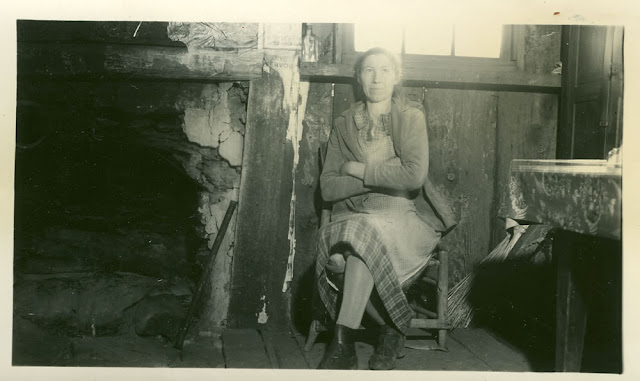In the late 19th and early 20th centuries, families throughout the tobacco-growing regions of North Carolina and Virginia earned much-needed income by sewing drawstrings into cotton tobacco bags. Long forgotten today, tobacco bag stringing was a common activity in many communities. Because the labor was not physically demanding and could be done at home, the work attracted many women, children, and others who needed money to supplement their farm incomes, or who could not find work in nearby factories and mills.
Tobacco bags were used to hold loose tobacco, which smokers used in pipes or to roll their own cigarettes. The bags were usually made of cotton or muslin cloth and measured about four by three inches. They were sewn down the length of two sides, with an opening left at the top. Tobacco bag stringers would thread the string into both sides, enabling the smoker to pull on the ends to close the bags. Experienced stringers were remarkably efficient. One woman from West Durham, North Carolina remembered working only in her spare time and still stringing as many as a thousand bags a day, for which she earned about fifty cents.
Many of the bag stringers received work through a “bag agent,” who was employed directly by the manufacturer. The agent was often a local businessman or county government official who was well known throughout the community. Distributing tobacco bags became an important responsibility when demand for work outpaced the number of bags available. A bag agent in Leaksville, North Carolina in 1939 described the need for work in his community:
“The mills here have been running short time for several years now. And I believe less than one half of the people normally employed are now at work. Boiled down this means there probably is one in each household partly employed [as a tobacco bag stringer]. So every day I have hundreds of requests for bags above that I am able to provide. They come at me from every angle, telephone, doorbell and since my business is in my residence, they'll even go around the house and come in the back door just to tell me how needy they are, and ask me to please get them some bags to string to help out in the little they now receive.”
In 1939, three companies produced the bulk of the tobacco bags used in the United States. Of these, only one—the Golden Belt Manufacturing Company, a subsidiary of American Tobacco in Durham, North Carolina—had come up with a way to insert drawstrings mechanically. The other two companies—the Millhiser Bag Company in Richmond, Virginia and the Chase Bag Company in Reidsville, North Carolina—had to rely on human labor to string the bags. This was not a small business: the three companies combined to produce a billion tobacco bags a year.
Although many Americans showed a clear preference for the more convenient machine-rolled cigarettes, loose tobacco was still much cheaper and saw its sales jump in times of economic hardship. During the Great Depression, a bag of loose tobacco, from which about thirty cigarettes could be rolled, sold for ten cents, while packs of twenty machine-rolled cigarettes cost fifteen cents.
(via NCpedia)




































































0 comments:
Post a Comment